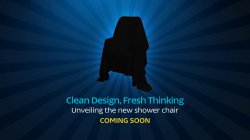
Ceiling hoists are one example. Without the right track configuration and product, you can endanger users and create extra costs for building owners and managers.
So what should you look for beyond the minimum health and safety standards, to ensure you’re specifying the most appropriate product?
Consider these 5 questions during the design and specification stage.
- What lifts does the hoist need to facilitate?
- What weight capacity do you need?
- Is the building structure sufficient?
- How does the hoist charge?
- What additional safety features can a hoist have?
1. What lifts does the hoist need to facilitate?
A mistake we see architects and specifiers often make is to specify the track configuration before confirming the room layout and required lifts. If the track doesn’t correspond to these, it’s possible the lifting tape will be pulled at an angle when users are being transferred. And that leads to unnecessary wear and tear that can jeopardise safety.
Typical lifts include bed to commode, bed to wheelchair, bed to chair and bed to en-suite. Will users need to transfer between rooms? Is it a special school with therapy rooms requiring lifts from off the floor?
Once you know the lifts and the room layout, you can configure the track to facilitate safe lifting while providing flexibility. For example, without substantially increasing up-front costs, you can specify an H system instead of a straight track if lifts or layout could change.
2. What weight capacity do you need?
Users’ weight dictates the capacity the hoist will need, and that determines which model hoist you should specify. And often specifiers will focus on the hoist itself without considering the ceiling track capacity, which is partly determined by how it’s fixed to the building. You can then find yourself in a situation where the track can’t safely support the user’s weight.
3. Is the building structure sufficient?
Today’s design trends favour lighter buildings with elements like stud partitions and other lightweight structures instead of traditional timber supports. And while there are definite design, cost and environmental benefits to this approach, it can cause issues with hoisting because they’re not load bearing. And that means standard hoist installations often aren’t safe for lifting.
You save time and money by considering the track configuration in the early stages and designing the wall and ceiling structure to accommodate. Alternatively, fixing options such as slimline wall posts are available should the structure be insufficient.
4. How does the hoist charge?
The charging method is particularly important in care homes, hospitals and special schools where the hoist may have multiple users and carers. For these applications, consider hoists with an in-rail charging facility, so there’s not a situation where the battery is dead when someone needs to make a transfer.
With this feature, the hoist charges whenever it’s not in use, so it’s one less thing for carers to worry about. Otherwise you rely on them returning the hoist to the charging station, which doesn’t always happen in a busy environment.
5. What additional safety features can a hoist have?
All hoists and tracks must meet minimum standards, but there are additional features you should look for.
One such mechanism prevents carers from starting a lift if there’s not enough battery power to complete the transfer, so there’s never a situation where a user is stuck mid-lift. Another is a secondary safety brake on the lifting drum, preventing the hoist from going into freefall if there’s a failure.
Also consider software-driven hoists with a diagnostic package. These allow you to track usage, charging patterns and number of lifts carried out. They also tell you if the hoist has lifted more than its stated capacity. This feature provides a vital check in care environments because there’s a way to monitor that the hoist is being used safely, and provides peace of mind for employers.
A final note – look at whole-life costs when considering these (and other) features
When you’re working to a defined budget, it’s easy to focus on up-front costs during specification. But with hoists in particular there’s a big range when it comes to running costs because of varying warranty lengths and replacement part prices.
Although many of these important safety features are more expensive initially, they can be more cost-effective over the medium to long term – which means your clients can deliver better care, more affordably.
And if you have any questions about track configurations or hoist specification, contact me on 0845 658 8411 or on dale@wealdenrehab.com for a free consultation about your project requirements.

Latest Blog Posts
Seasonal opening times 2025/26
2025 Holiday Season Update - Our team are here for you but we will be taking a break between the 24th December and 2nd January 2025.

New Shower Chair Innovation
Experience Wealden Rehab’s new shower chair innovation at the OT Show 2025

Responsive Care Equipment Supplier Across the UK
Supporting hospitals and care providers in unsettling times ...

NAEP Conference 2025
Meeting Occupational Therapists, Commissioners and Exploring Bariatric and Paediatric Solutions

Our Seasonal opening times 2024/25
Our team are here for you but we will be taking a break between the 24th December and 2nd January 2025.

Can a RAZ shower chair rust?
Get an in-depth look at the RAZ shower chair range and the protective features that make them built to last



